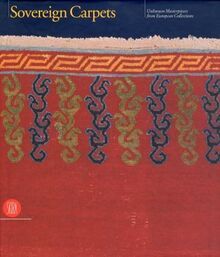Sovereign Carpets
| Sovereign Carpets | |
|---|---|
 | |
| General information book | |
| Title | Sovereign Carpets |
| Creator | E Concaro |
| Publisher | SKIRA (03 Apr 2000) |
| Format | 254 x 368.3 x 25.4mm, 240 pages |
Sovereign Carpets, create by E Concaro. The book illustrates the extraordinary and very ancient art of rugs with a relevant selection of Oriental rugs--from the oldest to the ones produced in the late 19th century--belonging to European private collections, besides a set of rugs coming from the Russian ethnographic museum of St. Petersburg. The fruit of long research within the rich private artistic patrimony, the catalog assembles two hundred Oriental rugs from the 15th to the 19th century, coming from Persia, Anatolia, the Caucasus, Central Asia, Tibet, Turkestan, and China. The pieces featured in the volume cover vast chronological and geographical sections of the fascinating world of carpets; the aim of the book is both eclectic and simple: to present very beautiful rugs belonging to private collectors and to give--through brief introductory chapters--an overview of the main carpet-weaving areas of the world. A series of maps and a glossary of technical terms are designed to help the nonprofessional reader.
The book illustrates the extraordinary and very ancient art of rugs with a relevant selection of Oriental rugs--from the oldest to the ones produced in the late 19th century--belonging to European private collections, besides a set of rugs coming from the Russian ethnographic museum of St. Petersburg. The fruit of long research within the rich private artistic patrimony, the catalog assembles two hundred Oriental rugs from the 15th to the 19th century, coming from Persia, Anatolia, the Caucasus, Central Asia, Tibet, Turkestan, and China. The pieces featured in the volume cover vast chronological and geographical sections of the fascinating world of carpets; the aim of the book is both eclectic and simple: to present very beautiful rugs belonging to private collectors and to give--through brief introductory chapters--an overview of the main carpet-weaving areas of the world. A series of maps and a glossary of technical terms are designed to help the nonprofessional reader.